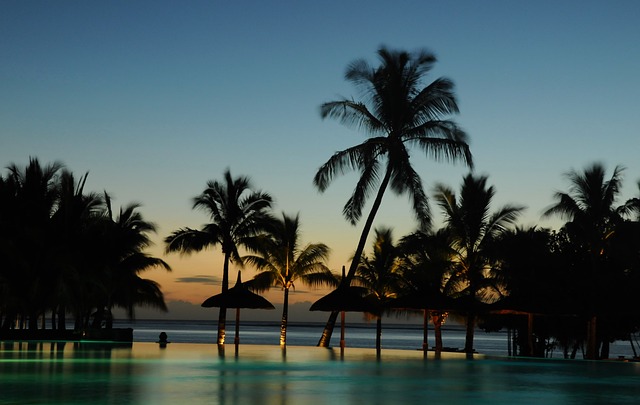The Fascinating Geography of the Maldives
The Geography of the Maldives is quite fascinating and unique. As a tropical nation located in the Indian Ocean, the Maldives is composed of 1,192 coral islands, making it the smallest Asian country in terms of both land area and population. The islands are grouped into 26 atolls, with the capital city of Malé located at the southern end of North Malé Atoll. The nation is best known for its white sandy beaches, crystal clear waters, and lush vegetation. Its location makes it an ideal holiday destination for tourists looking to experience a tropical paradise.
The Maldives is an archipelago
an island chain made up of 1,192 coral islands located in the Indian Ocean. As part of the Geography of the Maldives, these atolls form an archipelago that covers 90,000 square kilometres and stretches 820 kilometres from north to south. The archipelago can be divided into 26 natural atolls, each composed of small islets and reefs. These islands are mostly uninhabited, making them the perfect destination for travellers seeking a peaceful beach paradise.
The Maldives is made up of coral reefs
This interesting feature of the Geography of the Maldives adds to its many attractions. The coral reefs are home to a variety of marine life and plants, making them a great location for underwater activities such as snorkelling and diving. It is also an important part of the ecology of the region, providing habitats for a range of species and acting as a natural barrier from storms and waves. Additionally, the coral reefs serve to protect the shoreline from erosion, which is a major concern in this low-lying area.
The Maldives is located in the Indian Ocean
This archipelago is part of the Geography of the Maldives, located southwest of India and Sri Lanka. With an area of 298 square kilometres, the Maldives is one of the smallest countries in the world and is made up of 1,192 coral islands grouped into 26 atolls. The tropical climate of the Maldives makes it a popular destination for travellers who want to experience its beautiful beaches, vibrant coral reefs, and lush greenery. The clear waters of the Indian Ocean also offer up stunning views of its abundant and colourful marine life, such as sea turtles, dolphins, manta rays, and whales. In addition, visitors will find many palm trees, as well as the beautiful Reed Flute Cave and the Devil’s Tower.
The Maldives has a tropical climate
Located in the Indian Ocean, the Geography of the Maldives consists of over 1000 coral islands, making it one of the most geographically diverse countries on the planet. The Maldives enjoy a warm climate throughout the year with temperatures rarely dropping below 25°C. The average yearly temperature hovers around 28°C, with the highest average temperature occurring in June and July (around 32°C). The moist and humid climate is perfect for growing tropical vegetation and flowers, making the island nation a popular destination for tourists looking to enjoy beautiful beaches and lush forests.
The Maldives is home to many species of fish and coral
This is thanks to the incredible geography of the Maldives. It is made up of a chain of 1,192 coral islands, which form a crescent-shaped archipelago located in the Indian Ocean. This archipelago provides ideal conditions for vibrant and diverse marine life, which includes many species of fish, coral, and other colourful marine life. The geography of the Maldives also makes it an ideal place for surfing, snorkelling, and diving, with its warm waters and some of the world’s best beaches. The geography of the Maldives also allows it to have a tropical climate, with temperatures rarely falling below 25 degrees Celsius. The geography of the Maldives also makes it vulnerable to extreme weather events such as cyclones, as well as rising sea levels caused by global warming. The geography of the Maldives has also been affected by human activity, with several man-made canals being built through atolls that connect two or more bodies of water. Finally, the geography of the Maldives has also created an amazing array of habitats and ecosystems, such as lagoons, seagrass beds, and mangrove forests. These are just some of the reasons why the Maldives is one of the world’s most beautiful places!
colourful marine life and many palm trees
The Geography of the Maldives is home to a large variety of colourful marine life and many palm trees. The coral reefs are home to an abundance of fish, as well as a variety of other marine species. The waters around the Maldives are also known for their clear waters and stunningly coloured coral reefs. The turquoise waters provide a perfect backdrop for some of the most stunning beaches in the world. Palm trees line the white sand shores of the islands, providing a perfect setting for sunbathing and swimming. With its incredible biodiversity and stunning scenery, it’s no wonder the Maldives is a popular destination for travellers from all over the world.
Reed Flute Cave
The Geography of the Maldives is home to an incredible natural wonder, Reed Flute Cave. Located in Guilin, China, this limestone cave is filled with beautiful and otherworldly stalagmites and stalactites. Tourists can explore the depths of the cave and take in the views of the illuminated rocks and formations. The cave also features several artworks and inscriptions from visitors throughout history. A tour of Reed Flute Cave is one of the must-see attractions in the Maldives for any tourist looking for a unique experience.
The Devil’s Tower
A unique geological feature located in the Geography of the Maldives is the Devil’s Tower. This pinnacle of rock rises from the depths of the Indian Ocean to a height of almost 100 feet, making it an imposing sight. Its sides are covered with colourful coral, and its top is inhabited by a variety of marine life, including crabs, sea turtles, and large shoals of brightly coloured fish. It is a popular destination for divers who want to experience the unique and awe-inspiring beauty of the Maldives.


